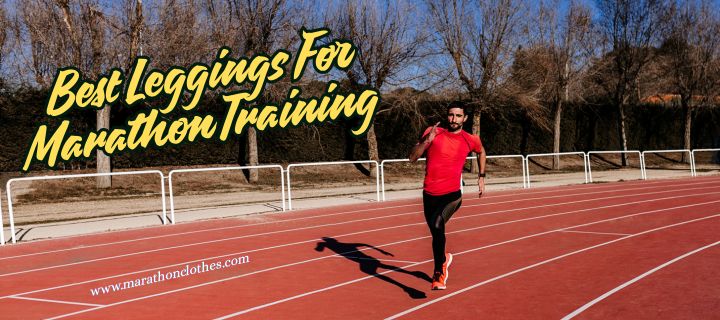Marathon Training Guide 2025: Lightweight or Compression Leggings, Which Ones are Best?

Marathon-training has changed a lot today. And the same can be said about marathon training gear. In 2025, marathon training gear is supposed to support performance, ensure recovery and offer maximum comfort. While shoes often dominate the conversation, leggings form an equally important part of the training wardrobe – as runners know very well. Using the right pair can mean the difference between a smooth run and an uncomfortable experience.
These days, design innovations and advanced fabric technologies are becoming more prominent. More and more athletes and retailers are wondering whether marathoners should choose lightweight leggings or go for compression leggings. Take a look at both options and find out which ones are best.
Lightweight Leggings
These offer the right balance between freedom and breathability. Lightweight leggings continue to be a top choice for runners who crave comfort and mobility. These are designed to be almost weightless, allowing optimal freedom of movement while allowing runners to enjoy steady airflow during long runs.
While doing marathon-training in summer or in hot climates, where the sun can sap focus and energy quickly, lightweight leggings can make a lot of difference. These types of leggings combine breathability and stretch in a single package. Fabrics like polyester-spandex blends or nylon-spandex create a base that is fast-drying, flexible and ultra-light. You can also find many of these leggings coming with mesh panels in high-sweat areas, such as along the thighs or behind the knees, improving ventilation strategically. Lightweight leggings have a minimalist design, which makes them perfect for pairing with half-zip tops or for layering under shorts without feeling restrictive.
These are loved especially by runners who prefer long-distance comfort over muscle support. People who train for speed and require an unrestricted stride while running also love to go for these leggings. When it comes to the style, these can fit seamlessly into modern marathon fashion. Matched with moisture-wicking tank tops or cropped tees, these can offer a sleek look that feels Instagram-ready. Actually, these appeal to both social-media savvy athletes as well as serious runners.

Compression Leggings
These types of leggings are essential for support and recovery. While lightweight leggings focus on freedom, compression leggings ensure targeted support. According to many marathoners out there, it works like a second layer of muscle – designed to improve circulation, offer stability and reduce fatigue, both during and after runs. Compression leggings are designed in a very scientific way. This makes it particularly valuable for endurance athletes who put their bodies under continuous stress.
Nylon-spandex or polyamide-spandex blends are often used to make compression leggings in 2025. These offer strong yet flexible support. These are innovative, in the sense that these leggings come with graduated compression zones – which apply pressure in particular areas of the body to reduce swelling and improve blood circulation. Flatlock seams can prevent chafing even during long-distance running whereas high waistbands offer additional stability around the core.
When runners have to prepare for long-distance running events, they choose compression leggings. These can also help them to manage fatigue during high-mileage weeks or when they want to recover faster after training sessions. These are equally effective for cooler seasons, working also as a thermal base layer that can be put on under shorts without adding to the bulk of clothing.
Styling compression leggings leans into performance aesthetics. A lot of athletes love monochrome looks, matching them with technical jackets or seamless racerback tops. It helps to create a futuristic appearance that can match the high-tech nature of the marathon gear itself. These designs are functional, and also project a confident, strong identity – which is ideal for marathoners who want to ensure peak performance.
Matching Leggings To Training Needs
When it comes to deciding between lightweight and compression leggings, it is not only about coming to a decision about which one is superior. Rather, it comes down to a proper understanding of the specific training scenarios of runners and aligning running gear with their performance objectives.
For runners who want to prioritize unrestricted stride and optimal mobility, lightweight leggings can be the most practical choice. These come with airy construction and breathable fabrics, which make them perfect for long-distance comfort, warm-weather runs and workouts where it is essential to have both range of motion and speed.
On the other hand, compression leggings are worthwhile when runners focus more on muscle support and recovery. These types of leggings can improve blood flow and reduce vibrations. Runners can experience minimal fatigue during their endurance runs and can speed up their recovery afterward. These are especially useful while running in cooler climate or for athletes who like to layer their running gear.
A smart approach, for most marathoners, is to get both. Lightweight leggings can be perfect for summer training while compression leggings can be ideal for high-mileage weeks or recovery. Compression leggings can help make running wardrobe match the full range of training requirements. This flexibility can help runners to run further as well as smarter.

Fabric Innovations Defining 2025
In 2025, leggings technology has evolved a lot. You can now find more sustainable and sophisticated materials. Moisture-wicking polyester and four-way stretch spandex have become staples in the legging construction domain.
Sustainability has also become a defining factor. Recycled performance fabrics are becoming more and more popular as eco-conscious runners are looking for gear that match their values. Many of the top sportswear brands are promoting leggings that are produced with low-impact dyes or recycled polyester. In this way, they are making sustainability a key selling point for their brand. Mesh paneling and ventilation zones have also become standard features. These improve flow of air, providing runners with comfort while running for long distances.
Such types of innovations combine eco-conscious design, durability and functionality. Naturally, these are appealing to both athletes and retailers who sell them.
Bottom Line
If you are a retailer, you have to understand that the lightweight versus compression discussion should not translate into an either-or decision. It is crucial for you to stock private label leggings of both styles in your store, given that runner profiles vary widely. Some runners focus on freedom and breathability while others look for recovery assistance and optimal muscle support for themselves. Try to offer a diverse range, so that your store can cater to both groups.









